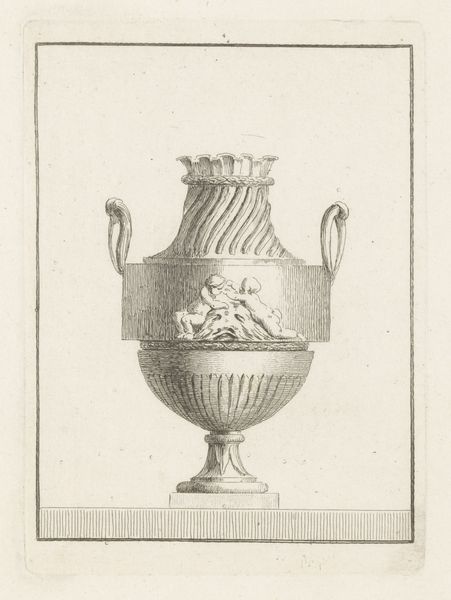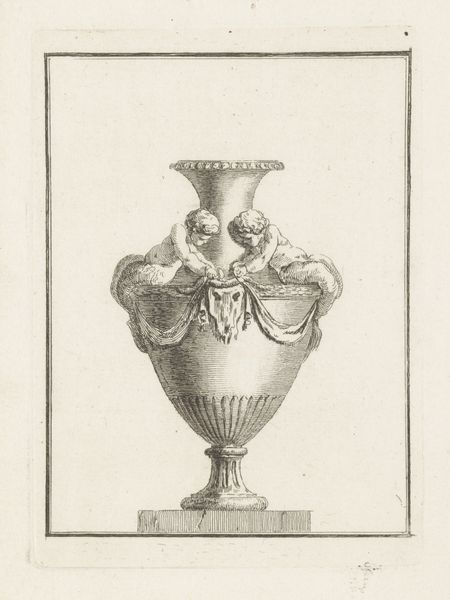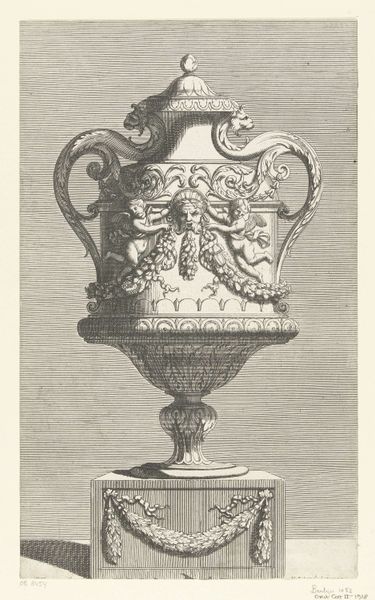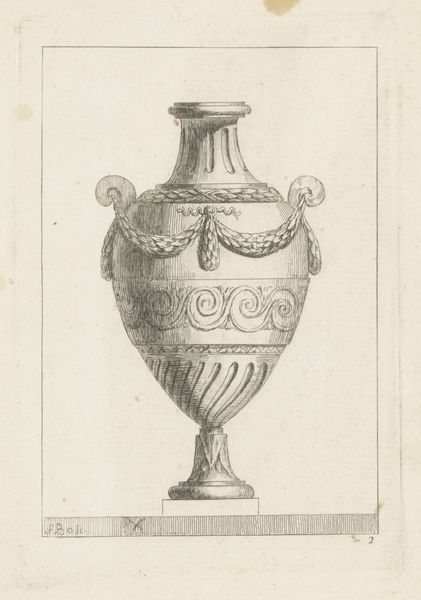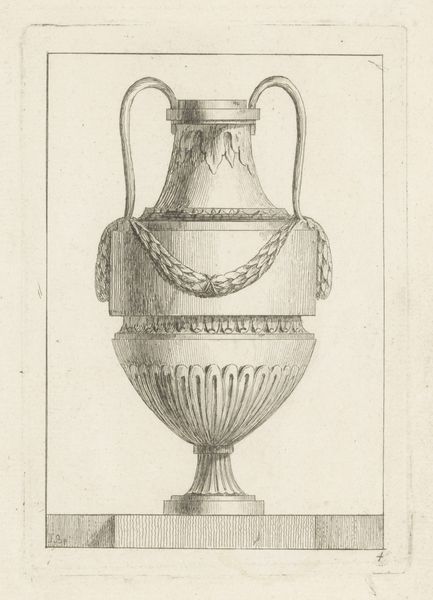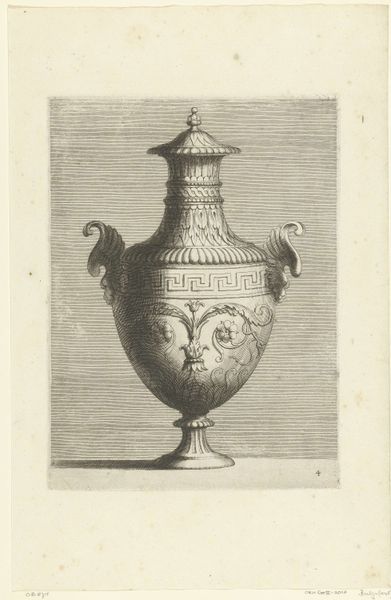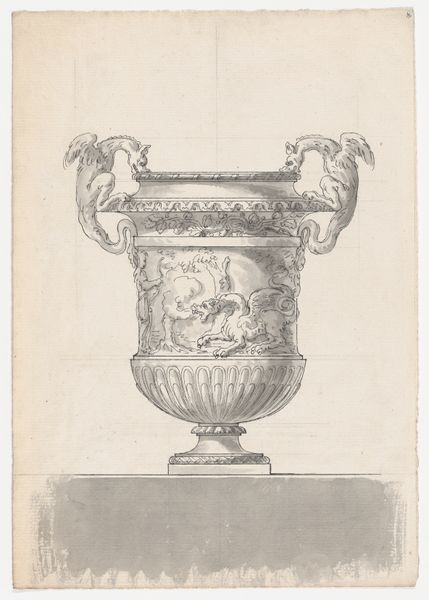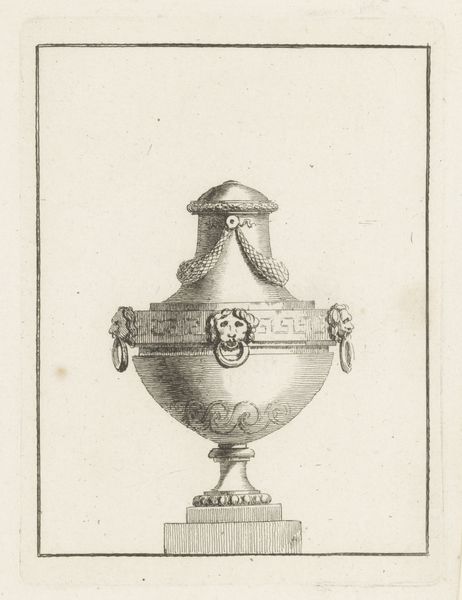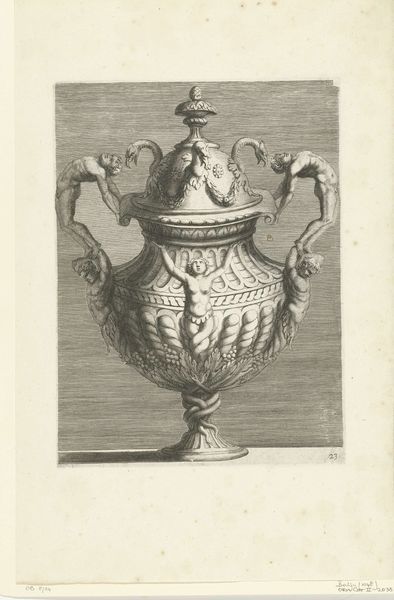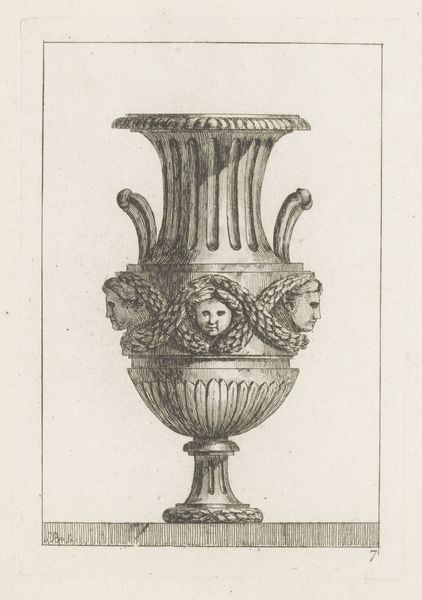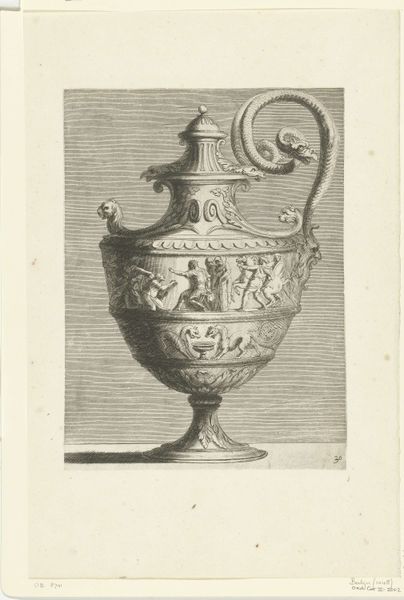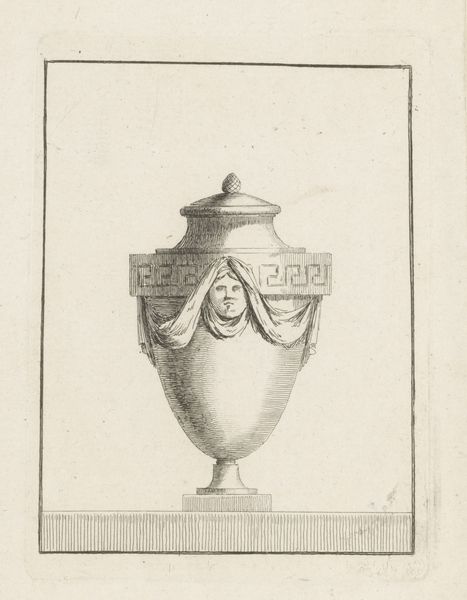
Dimensions: height 166 mm, width 130 mm
Copyright: Rijks Museum: Open Domain
Editor: Here we have an engraving called "Vaas met slang," or "Vase with Snake," dating from about 1770-1780. I am really intrigued by this Baroque-era print because it feels so spare, yet there is this fascinating image of a serpent coiled around the vase’s handle and lid. How would you interpret this work? Curator: This print emphasizes form above all else. Observe how the artist isolates and articulates each component. The rigid geometry of the table contrasts the curvilinear vase and serpent. This engraving is more interested in capturing line and form than in replicating any real-world scene. Editor: The engraving makes this very clear through its composition and emphasis on these lines. So the print almost removes function entirely from the depicted items? Curator: Precisely. Ask yourself what semiotic relationship exists between each of the represented objects, particularly that of the snake. How does the snakelike form affect the shape of the handle? Also, what does the surface detail accomplish with the urn shape beneath it? Editor: I guess the symmetry does give it that rigid feel. The snake sort of corrupts or disturbs that otherwise pure geometry of the vase. What purpose do you think that disruption serves? Curator: The serpent's form complicates the geometry and introduces an element of the wild, a serpentine flourish atop the urn. This is not about representing reality but is rather about an interplay of shapes and ideas. Editor: That is definitely not something I considered. It's amazing how much one can glean from studying form. I suppose focusing on form like this offers its own perspective, another way to appreciate artwork. Curator: Exactly! Each viewing provides a unique vantage point through which to apprehend the image.
Comments
No comments
Be the first to comment and join the conversation on the ultimate creative platform.
